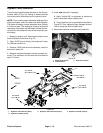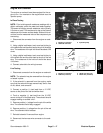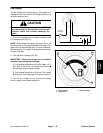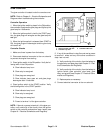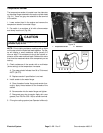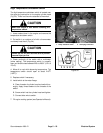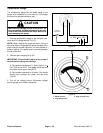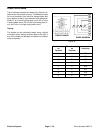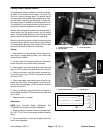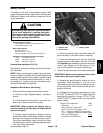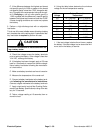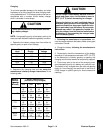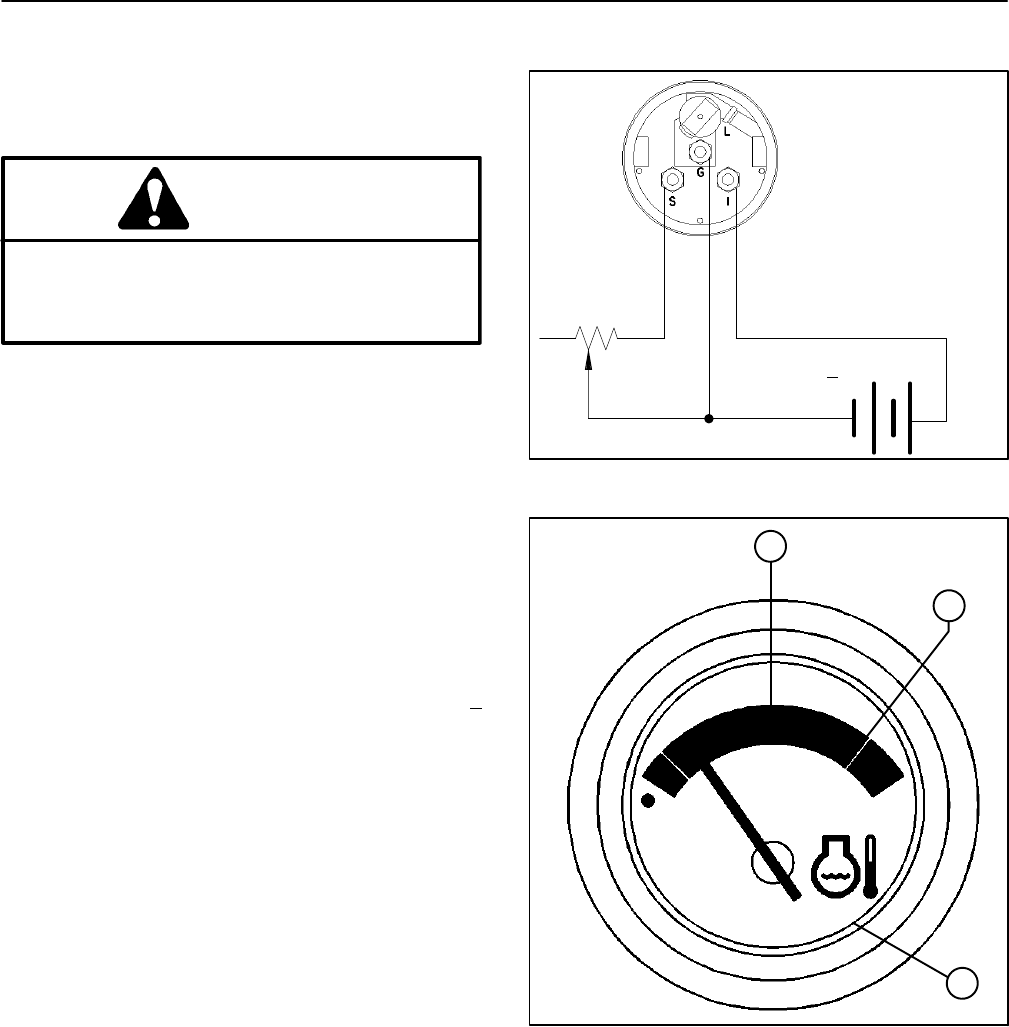
Groundsmaster 4000−DPage 5 − 24Electrical System
Temperature Gauge
The temperature gauge can be tested using a new
gauge as a substitute or by the use of a DC voltage
source and a variable resistance box.
CAUTION
Make sure the voltage source is turned OFF be-
fore connecting variable resistance to the elec-
trical circuit to avoid electrical shock and to pre-
vent damaging the gauge.
1. Connect temperature gauge to the variable resis-
tance and DC voltage source (Fig. 27).
NOTE: When reading the gauge test point, there are
two white dots on the gauge face below the edge of the
glass cover for the each test point. For each variable re-
sistance setting, the needle must be pointed between
the two white dots.
2. Take test point readings (Fig. 28).
IMPORTANT: Allow circuit to warm up for at least 5
minutes before taking test readings.
A. Set variable resistance to 71 ohms. Apply a 14 +
0.01 VDC to the circuit. The needle should point to
the middle of the green area (80
o
C).
B. Set variable resistance to 38 ohms. The needle
should point between the green and red area
(105
o
C).
3. Turn off the voltage source. Disconnect voltage
source, gauge, and variable resistance.
Figure 35
+
−
VARIABLE
RESISTANCE
14 VDC + 0.01 VDC
1. Middle position
2. High temp position
3. Edge of glass cover
Figure 36
1
2
3



